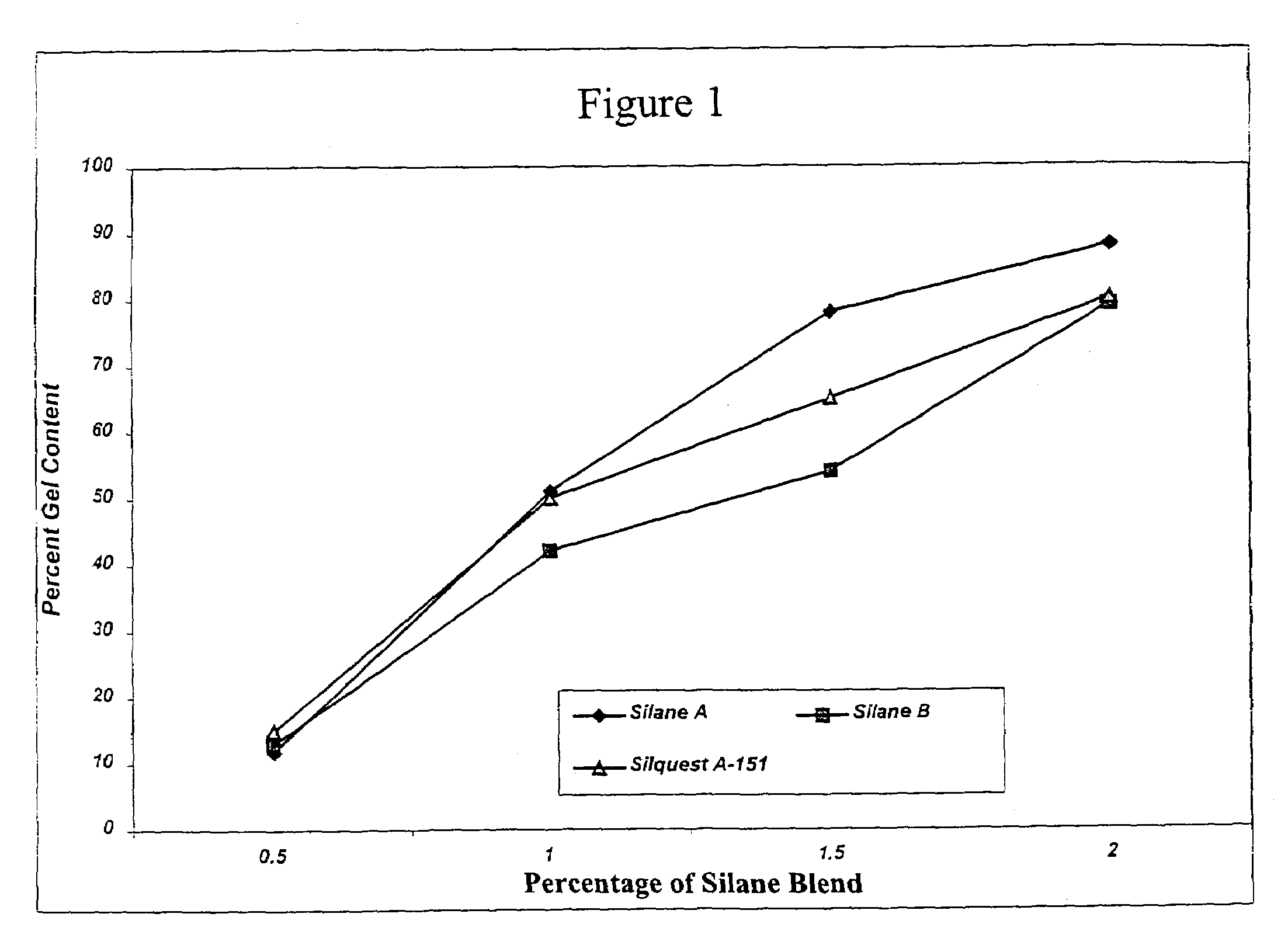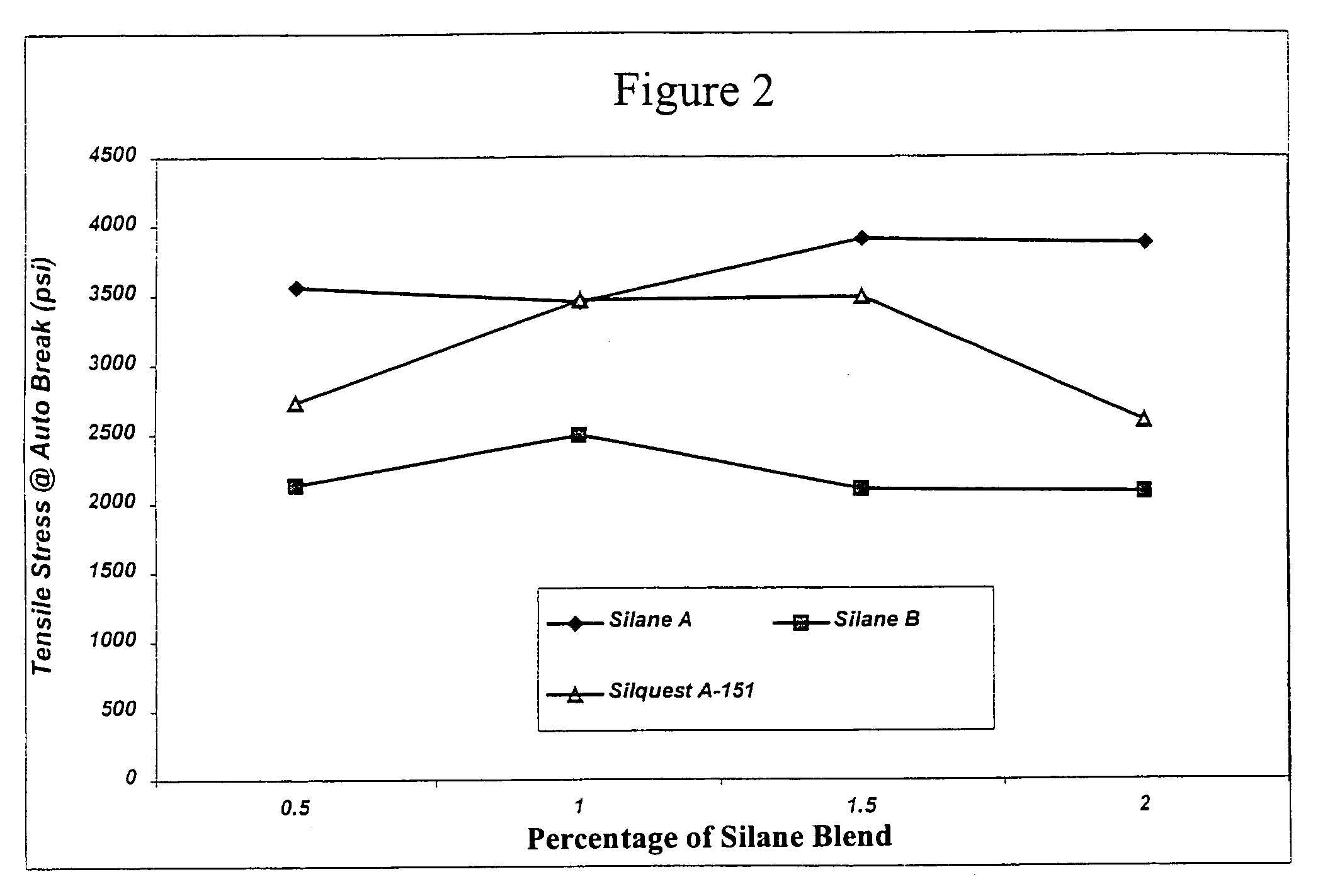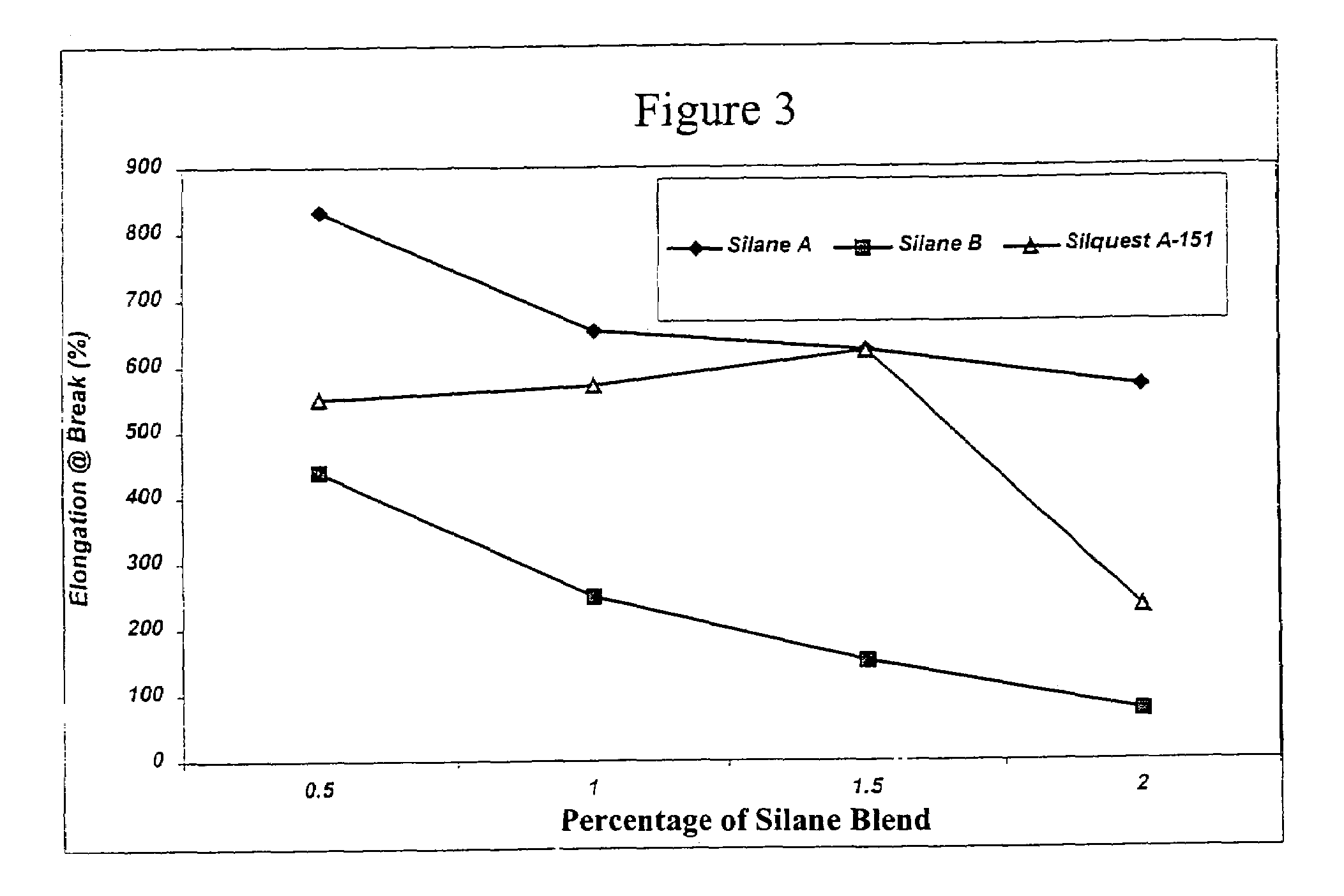Process for the production of crosslinked polymer employing low VOC-producing silane crosslinker and resulting crosslinked polymer
a technology of low voc-producing silane and crosslinker, which is applied in the field of process for the production of crosslinked polymer using low voc-producing silane crosslinker and the resulting crosslinked polymer, can solve the problems of environmental, health and safety concerns, and the limit of as-produced potable water pipe methanol content, so as to reduce the risk of explosion, flammability and health hazards, and achieve significant economic benefits
- Summary
- Abstract
- Description
- Claims
- Application Information
AI Technical Summary
Benefits of technology
Problems solved by technology
Method used
Image
Examples
examples 1-2
[0142]These examples illustrate the preparation of diol-derived organofunctional silanes (designated Vinyl Silanes A and B, respectively) which will later be grafted to polyolefin followed by crosslinking of the grafted polyolefin.
example 1
Preparation of Vinyl Silane A
[0143]Vinyl Silane A was prepared by the following method: 1173.4 grams (6.16 moles) of vinyltriethoxy silane (Silquest® A-151, available from GE Silicones) and 9.5 grams of a sulfonated ion exchange resin (Purolite CT-275 catalyst, available from Purolite Co., Inc.) were added to a 3 L round bottom flask equipped with an Oldershaw five plate distillation column, short path distillation head, and addition funnel. 728.3 grams (6.16 moles) of hexylene glycol (available from Sigma-Aldrich Chemical Co.) was charged to the addition funnel. The contents of the flask were heated to about 50° C. under vacuum at about 90 mm Hg. The hexylene glycol was charged over a period of about 3 hours to the flask. After addition was completed, the vacuum was slowly increased to maintain a steady distillation of ethanol. Distillation was continued until full vacuum and a pot temperature of about 56° C. was obtained. The material was then allowed to cool for 12 hours and was ...
example 2
Preparation of Vinyl Silane B
[0144]Vinyl Silane B was prepared by the following method: 633.8 grams (2.22 moles) of vinyltriethoxy silane (Silquest® A-151, available from GE Silicones), 4.7 grams of a sulfonated ion exchange resin (Purolite CT-275 catalyst, available from Purolite Co., Inc.) and 300.0 grams (2.22 moles) of 1,3-butanediol (available from Sigma-Aldrich Chemical Co.) were added to a 3 L round bottom flask equipped with an Oldershaw five plate distillation column, short path distillation head, and addition funnel. The contents of the flask were heated to about 40° C. under vacuum at about 60 mm Hg. The vacuum was slowly increased to maintain a steady distillation of ethanol. Distillation was continued until full vacuum and a pot temperature of about 60° C. was obtained. The material was then allowed to cool for about 12 hours and was filtered to yield approximately 536.0 g of Vinyl Silane B.
PUM
| Property | Measurement | Unit |
|---|---|---|
| wt % | aaaaa | aaaaa |
| wt % | aaaaa | aaaaa |
| wt % | aaaaa | aaaaa |
Abstract
Description
Claims
Application Information
 Login to View More
Login to View More - R&D
- Intellectual Property
- Life Sciences
- Materials
- Tech Scout
- Unparalleled Data Quality
- Higher Quality Content
- 60% Fewer Hallucinations
Browse by: Latest US Patents, China's latest patents, Technical Efficacy Thesaurus, Application Domain, Technology Topic, Popular Technical Reports.
© 2025 PatSnap. All rights reserved.Legal|Privacy policy|Modern Slavery Act Transparency Statement|Sitemap|About US| Contact US: help@patsnap.com



